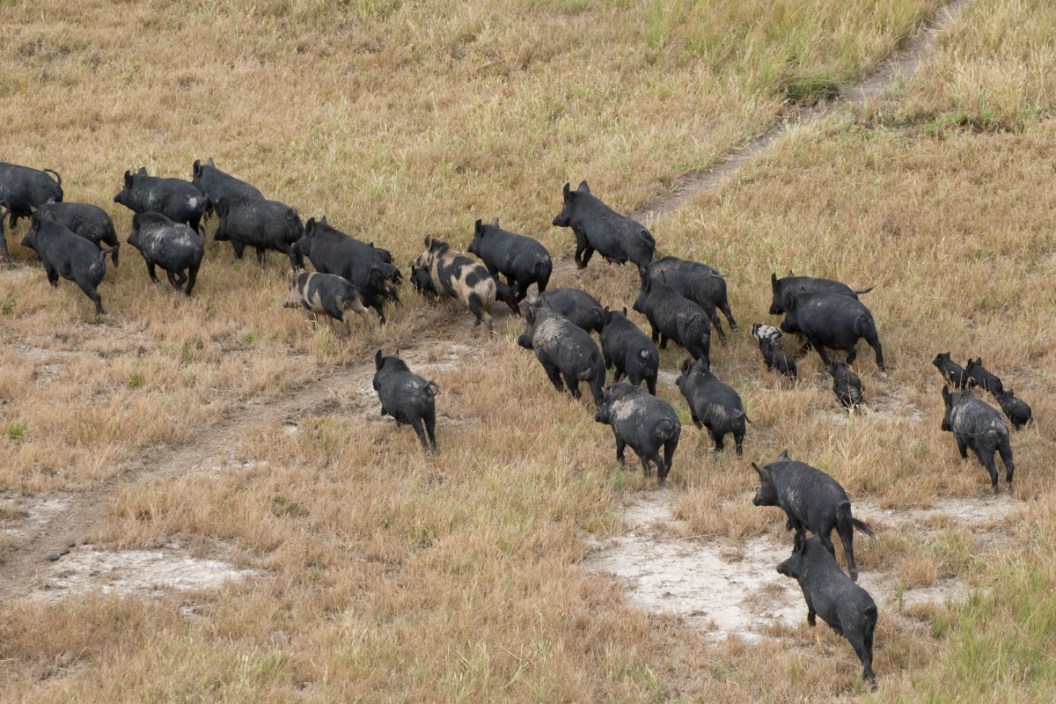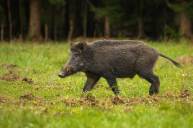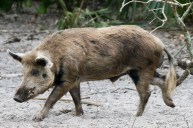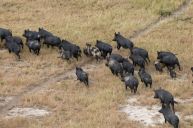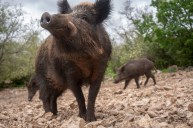How did feral swine get here anyway?
Everyone knows feral hogs are an invasive species here in North America. In recent years pig populations have exploded in places like Texas and they are just starting to make their presence known in other places like New York, California, and Oregon. Unfortunately, these pests reproduce quickly, and litters are large. It's a real chore to keep up with them. In fact, complete eradication of the feral hog population may be impossible.
As if that's not bad enough, these omnivores have no natural predators. They also wander in huge sounders eating almost everything in their path, including farmer's crops and native wildlife. At this point wild hogs have become such a common problem that it's hard to remember a time when they were not. It made us wonder how they even got here in the first place.
That got us curious. So, we decided to do a little research to figure out just how the feral hog got here. Just who is responsible for the feral pigs currently taking over states like Texas and Florida?
Who first brought wild pigs to the United States?
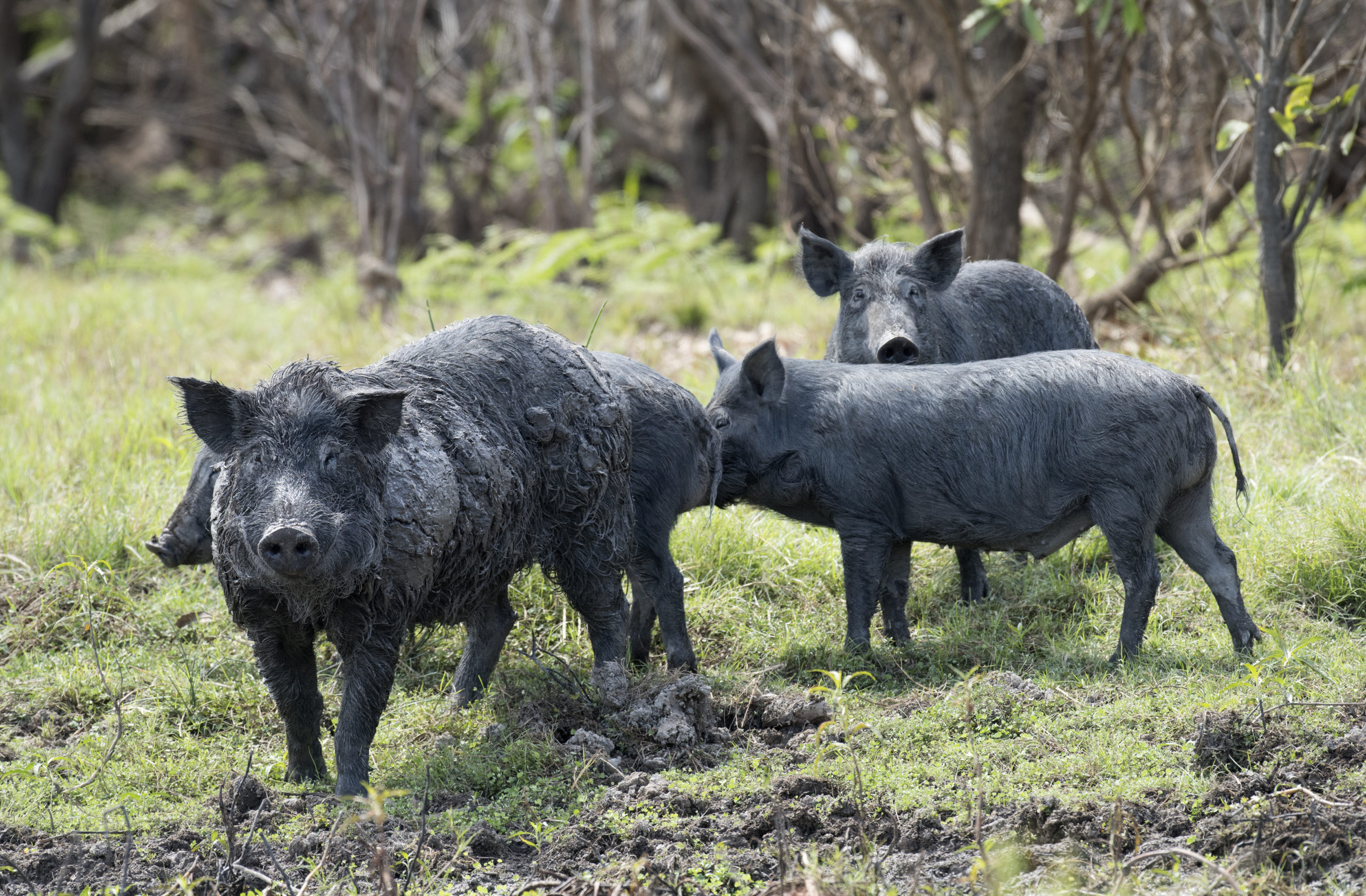
Getty Images: JohnCanemolla
It turns out hogs have been an unwanted part of our ecosystems longer than we thought. It's only in recent years that the issues they cause for ranchers have become more well-known outside of problem areas. In any case, the Texas Parks and Wildlife Department says the first bloodlines of our modern-day feral hogs were domestic pigs that were released by Christopher Columbus in 1493.
Of course, Columbus never landed on mainland North America, so these pigs were likely released in places like Cuba, and Jamaica. But it didn't matter. Most researchers believe this happened on his second trip. The pigs were left behind as food sources for future expeditions, or they were simply abandoned on the islands when they left. Either way, the animals took to the warm climate and quickly started producing piglets. With that came the first free-roaming populations of pigs in the New World.
Fast forward a bit for the next major introduction of feral swine from Europe. There are some disagreements over who was the first to bring pigs to the United States. Conquistador Juan Ponce de Leon may have been the first to release pigs in the Florida in 1521. However, this is unconfirmed. We do know the Spanish explorer Hernando de Soto released domestic pigs there in 1539. Either way, the first pigs in Florida were originally domestic livestock that went feral and started causing issues for native game animals and ground nesting birds.
When it comes to the more destructive Eurasian wild boar, the origins of them in North America are a little hazier. However, there were numerous introductions in several different states in the 1800s. Many of these introductions were into fenced hunting preserves. And predictably, many of them escaped. To make matters worse, many cross-bred with the feral swine that were already loose in the area creating hybrids.
The introduction of Eurasian wild boars continued into the early 1900s. These days, the U.S. Department of Agriculture believes hog populations in the states consist of a combination of the European boars, domestic pigs gone feral, and free-ranging hybrids of the two.
What problems do feral hogs cause?
Unfortunately, the first releases of feral swine in North America were done in the days before modern wildlife management. Before we understood all the problems these pests could cause for both humans and the environment. One major problem is simply agriculture. Large sounders can decimate a farmer's field ruining months of hard work growing and cultivating a crop in a single evening. What isn't consumed is often trampled.
When these animals wallowing and rutting up the ground with their tusks, it can destroy not only pastures, but lawns, and other personal property too. The TPWD estimates the population of approximately 5 million hogs likely causes $1.5 to $2.5 billion in damages every year.
As if that was not enough, the USDA reports feral swine can spread diseases. Not just to people, but to pets and livestock too. Salmonella, hepatitis, E. coli, brucellosis, influenza, and pseudorabies are just a few of the diseases they carry.
Finally, feral swine cause issues for native wildlife and natural resources too. Because they are omnivores, wild pigs will not shy away from killing and eating fawns, native snakes, lizards, and amphibians. They also like chowing down on bird eggs when they can reach them. Wild turkey eggs are especially vulnerable to a large sounder.
What can be done about feral hogs?
Unfortunately, at this point, not much other than control through hog hunting. Remember these animals can reproduce within their first year of life. Litter sizes of nine to 12 or more are not uncommon. Biologists have crunched the numbers based on sightings, harvest records, and other data. They estimate just in Texas alone hunters must stay consistent on gunning down seven out of every ten hogs just to keep the population in check.
The rapid expansion of the feral hog is why Texas and other states are increasingly moving towards open season 24 hours a day, seven days a week, 365 days a year. Most state wildlife services also have very loose regulations on legal methods of harvest. They usually don't care how you take feral hogs, just that you are taking out as many as possible.
At this point is seems like most wildlife services have given up on the idea of ever eradicating feral hogs completely. And there's not much we can do about it considering the people responsible died hundreds of years ago. Since we're stuck with them, the best thing we can do is probably just all do our part to help cut down on the hog population whenever possible.
Products featured on Wide Open Spaces are independently selected by our editors. However, when you buy something through our links, we may earn a commission.
For more outdoor content from Travis Smola, be sure to follow him on Twitter and check out his Geocaching and Outdoors with Travis YouTube channels.
NEXT: TRAPPER CATCHES 44 FERAL HOGS AT ONCE WITH SINGLE WELL-PLACED TRAP
WATCH
